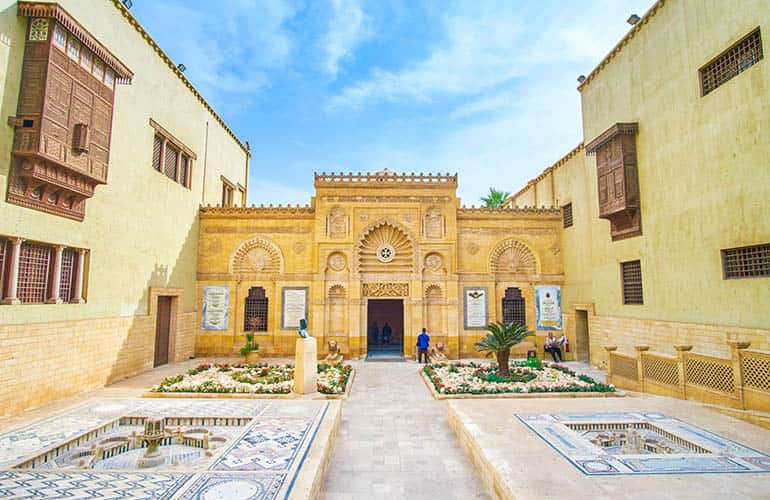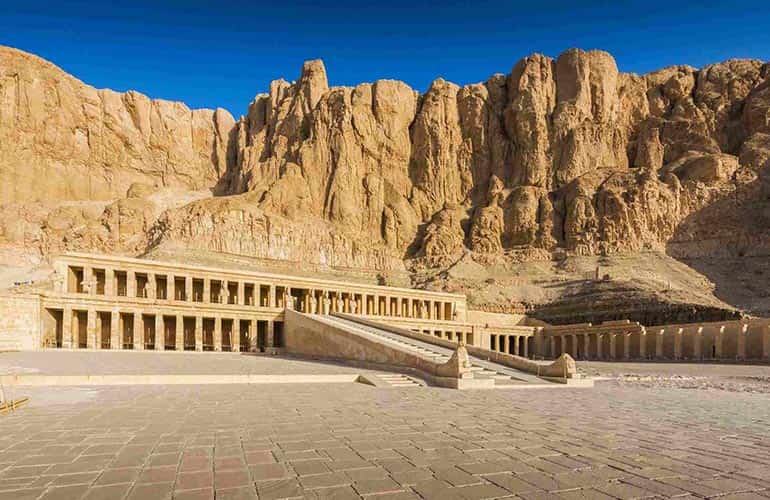Egypt 9 Day Itinerary
Are you ready to embark on a journey through time and explore the wonders of ancient Egypt? Look no further than this comprehensive Egypt 9-day itinerary that will take you through the highlights of this fascinating country. From the majestic pyramids of Giza to the stunning temples of Luxor, this trip will leave you in awe of Egypt’s rich history and culture.
This article will present an example of a route that includes the most exciting visits and activities. We will tell you what to see in Egypt itinerary 9 Days so you can enjoy it to the fullest and take home the best memories!
Here we leave you some of the most recommended Egypt 9 Day Itinerary with the best ratings to spend a few days off in Egypt:
Egypt 9 Day Itinerary Cairo, Alexandria & Nile Cruise
Egypt 9-day tour to Cairo, Luxor & Sharm El Sheikh
9 days Egypt tour package to Cairo & Nile Cruise by Sleeper Train
9-day Egypt itinerary to Cairo Aswan Luxor Nile Cruise, Hurghada
Plan to visit Egypt 9-day tour? You are puzzled and do not know what to visit?
We have an amazing Egypt 9 Day Itinerary that includes a visit to Cairo and a Nile cruise. You will spend 3 nights in Cairo and 3 nights on the Nile Cruise and 2 nights in Hurghada.
Day 1: Arrival in Cairo
Arrive in Cairo and check into your hotel.
The vacation of your life will begin its first day when you arrive at Cairo airport. Transfer to visit the oldest area of Cairo for a very informative tour of Coptic Cairo, visit the Hanging Church dedicated to the Blessed Virgin Mary, which was built on the Ruins of the Roman Fortress. of Babylon, the church of St. Sergius or the cave church, as well as the Ben Ezra Synagogue, which was once a Coptic church before being transformed into a Jewish synagogue in 882 AD.

Take a nap and enjoy your lunch at a worthwhile restaurant. After that, we will resume Cairo day tours with the Egyptian Museum tour; we will see the oldest artifacts inside the Egyptian Museum in Cairo, which was opened to the public in 1902.

Finally, take to the old Cairo bazaar for a fancy/fabulous shopping experience at Khan El Khalili Bazaar.
Day 2: Giza and Saqqara
You will be amazed in Cairo during your visit to the great Pyramids, where it’ll available to you see one of the most famous wonders of the world ” the Pyramids” and there is a possibility of taking lots of pictures with it, Furthermore you will know about the secrets of embalming and you can see the Pharaonic tombs “pyramids” from the inside.
Have you ever imagined a life of thousands of years’ that pass and whose wreckage remains so far, people who can do this? What is their own belief and methods that have amazed the world and made the survival of these ruins a mysterious question mark that the world strives for finding it out? This is exactly what you will know and see on your trip, also you will enjoy ride camel and horse near the Pyramids.

also Sakkara the city is most interested in the archaeologists, which is classified as one of the most famous tombs that make its visitors impressed by its originality and its great archaeological significance. It is located in its huge burial site dating back to the beginning of the ancient state until the Greek presence in Egypt, The most famous archaeological landmark is the Djoser pyramid, which dates back to the third Dynasty (2448- 2667), which presents an architectural innovation. It is the first of all the stones built on the ground, which was able to perpetuate this innovation to build the pyramids and even the fourth family and beyond.

Day 3: Nile cruise – High Dam, Lake Nasser & Philae Temple
the Aswan Dam was built by the British between 1898 and 1902. At the time of its construction, it was the largest dam in the world, and its height was twice raised again in an effort to control the river. The roads to Abu Simbel and the airport cross the dam and the views over the river and islands are stunning.
Stretching south more than 500 km (310 miles) from the High Dam and reaching depths of over 180 m (590 ft), Lake Nasser is the largest artificial lake in the world.
Crocodiles thrive in Lake Nasser, it’s one of the most important tourist attractions in the Lake, Crocodiles hunting is prohibited by Egyptian Law.

As the center of the cult of Isis, the island of Philae was an important place of pilgrimage for worshippers until long into the Christian era. From Philae, Isis was said to watch over the sacred island of Biga, one of the mythical burial sites of her husband Osiris.
From here, a long courtyard, flanked by colonnades, leads to the magnificent Temple of Isis, the main building in the Philae temple complex.
To the west of the temple lies the Gate of Hadrian, which was inscribed, in 24th August AD 394, with Egypt’s last hieroglyphics. On the eastern side of the island, the small Temple of Hathor contains reliefs of musicians, among them Bes, the god of singing.
Further south, close to the edge of the water, is the classically graceful, 14-columned Kiosk of Trajan, which has scenes of the Roman emperor burning incense in front of Osiris and Isis. At the northern end of the island, the Temple of Augustus and Gate of Diocletian lie in ruins.

Day 4: Nile Cruise – Kom Ombo
At afternoon the cruise will be selling to The Egyptian City” Kom Ombo “
Surrounded by fields of sugarcane and corn, Kom Ombo is a pleasant agricultural town, home to many Nubians displaced by the creation of Lake Nasser.
This unusual structure is the result of the temple’s dedication to two gods – the left side to the falcon god Haroeris (Horus the Elder) and the right side to Sobek, the local crocodile god.
The Chapel of Hathor, just to the south of the temple, now houses a few crocodile mummies from the nearby crocodile necropolis.

Day 5: Nile cruise – Edfu & The Temple of Horus at Edfu & Luxor East Bank
The City of Edfu & The Temple of Horus at Edfu
Edfu stands beside the Nile almost exactly halfway between Luxor and Aswan.
The Temple of Horus at Edfu, which was buried under sand and silt for nearly two thousand years, is the largest and best-preserved Ptolemaic temple in Egypt. Construction of the temple began under Ptolemy III Euergetes in 237 BC and the main temple complex took 25 years to complete.

Upon arrival Luxor, you will stop at the East Bank to visit
The Temple of Karnak
that is how it combines the achievements of many ancient builders & Pharaohs. It actually comprises a vast mix of ancient Egyptian decayed Temples, Chapels, and many other buildings. Inside it, you will find 3 main Shrines of Amun-Re, Mut, and Khunso on about 247 acres of Land.

Then, you will visit Luxor Temple
There is more history in every square meter in this terrific temple which was constructed about 1400 BCE and unlike the rest of the temples which were constructed in ancient Egypt, it wasn’t dedicated to any cult god or any deified king in death but it was dedicated to the rejuvenation of kingship where many kings were crowned and the best time to visit this magical Temple is at night
Day 6: Nile cruise – Luxor West Bank & Transfer to Hurghada
Valley of the Kings
The remote, barren Valley of the Kings was the necropolis of the New Kingdom pharaohs. By digging their tombs deep into the Theban Hills, pharaohs from Tuthmosis I (c.1500 BC) on hoped to stop robbers stealing the priceless possessions buried with them.
But for all that, the structures themselves remain, their dramatic corridors and burial chambers stunningly adorned with symbolic accounts of the journey through the underworld and ritual paintings to assist the pharaohs in the afterlife.
and many different amazing Ancient Temple Monuments. In the Valley of the kings you will be taken back in time entering the tombs of the Pharaoh’s that contain painted pillars and walls.

Temple of Queen Hatshepsut
Against its stark mountainous backdrop, the partly rock-hewn Mortuary Temple of Hatshepsut at Deir al-Bahri is a breathtaking sight. It was designed by Queen Hatshepsut’s architect Senenmut in the 18th Dynasty and is an extraordinary monument which rises from the desert plain in a series of imposing terraces.
The temple was damaged by Ramses II and his successors, and Christians later turned it into a monastery (hence the name Deir al-Bahri, which means “Northern Monastery”). However, the ongoing excavation of the site continues to reveal much exquisite decoration. Adjacent to the main temple are the ruins of the much older Temple of Montuhotep II, the ruler of the 11th Dynasty who managed to unite Egypt, and the 18th-Dynasty Temple of Tuthmosis III.

Then to see the Colossi of Memnon
Soaring 18 m (60 ft) into the sky, the two enthroned statues of Amenhotep III are the first monuments most visitors see on arriving in the West Bank.
They originally guarded Amenhotep’s mortuary temple – thought to have been the largest ever built in Egypt -which was plundered for building material by later pharaohs and gradually destroyed by the annual floods.
All that remains are the two faceless colossi, which, despite the ravages of time, are an impressive sight.

Day 7&8: Hurghada on the red sea

Day 9: Departure
Fly back to Cairo for your departure flight, or extend your trip to explore more of Egypt.
This 9-day itinerary is just a glimpse of the wonders that Egypt has to offer. From the iconic pyramids to the serene temples along the Nile, this trip will immerse you in the history and beauty of this ancient civilization. So pack your bags and get ready for an unforgettable adventure in the land
Alternatively, you may want to take a final guided tour, there are many outstanding places to visit and much information to know, do not miss it up.






